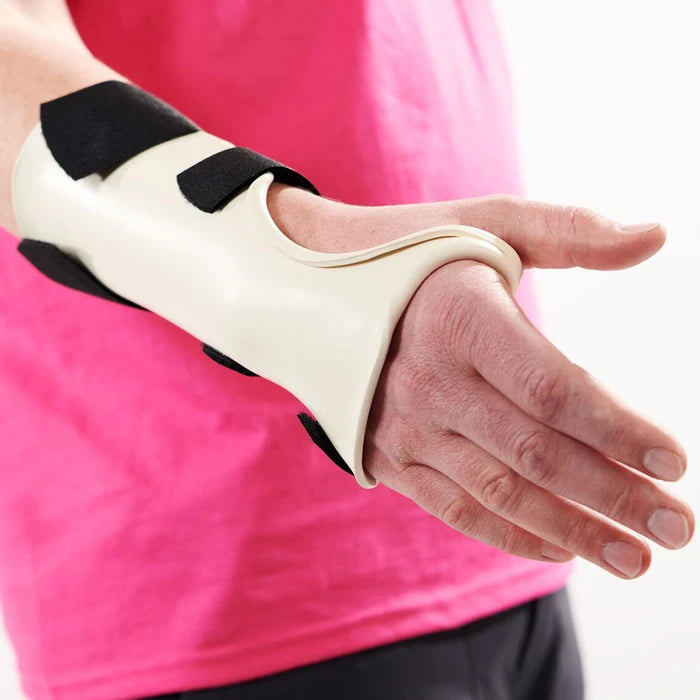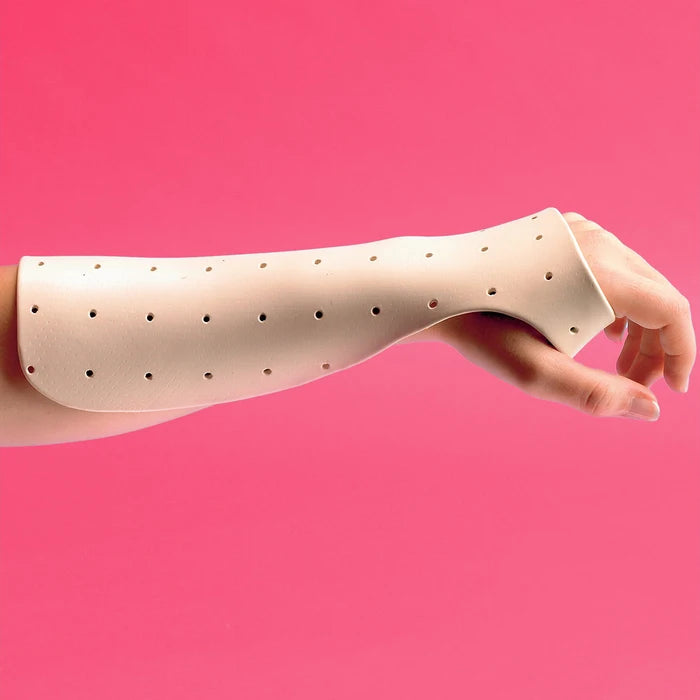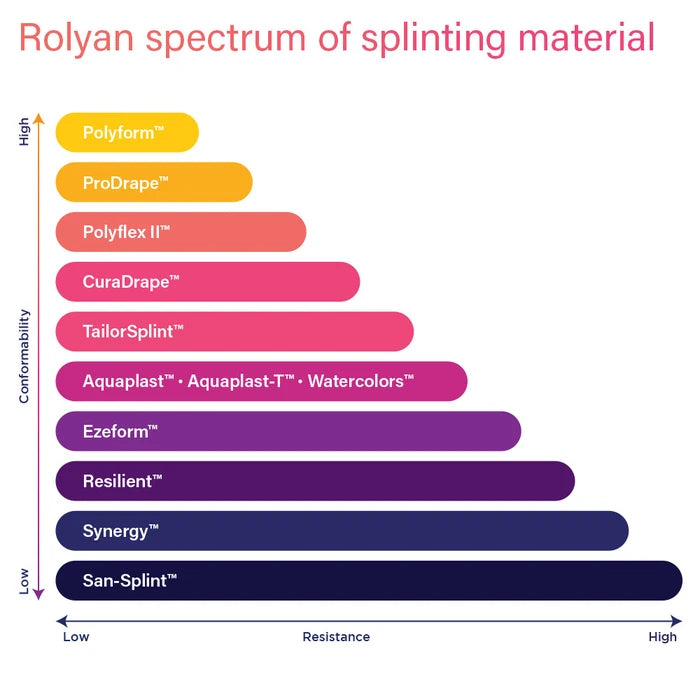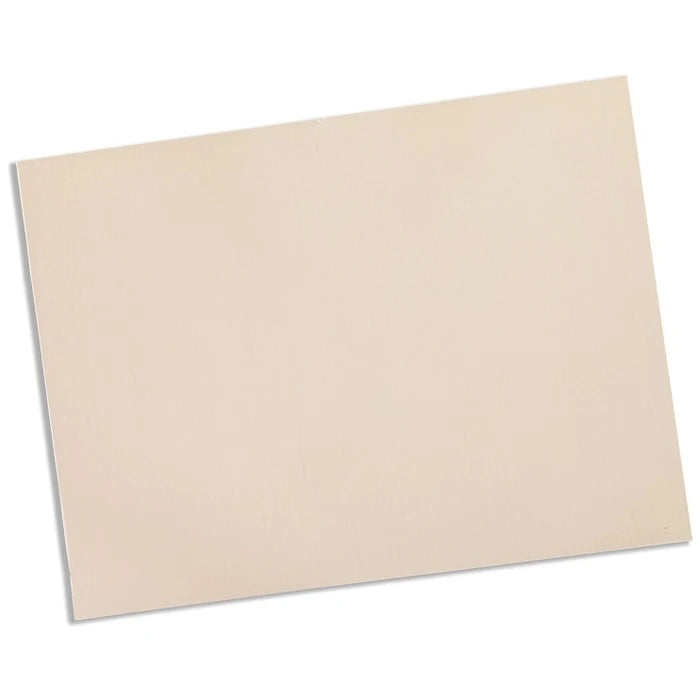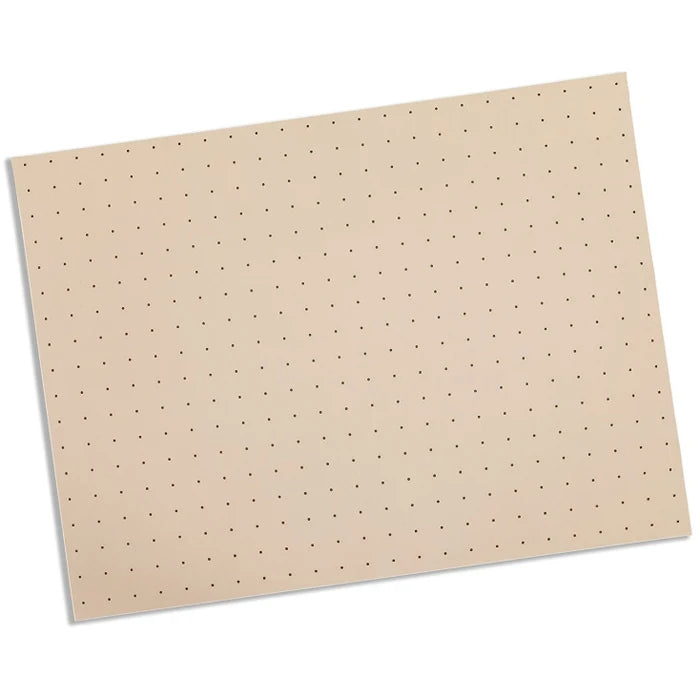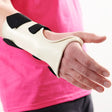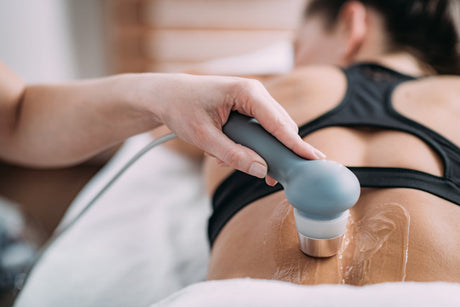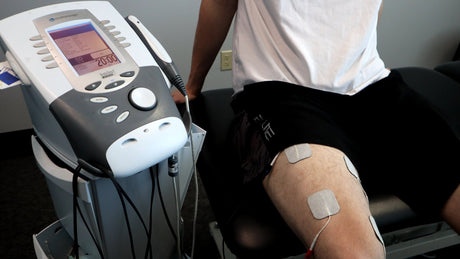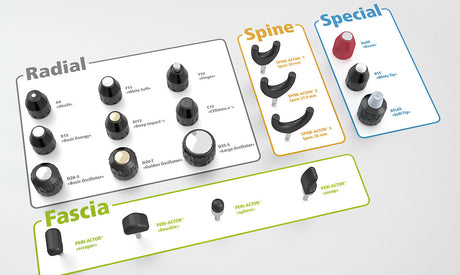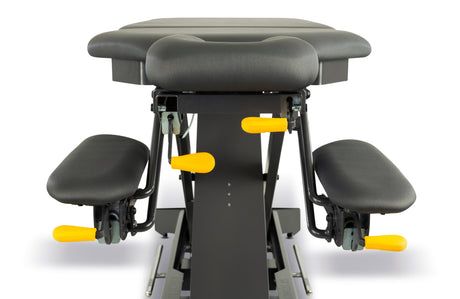
Rolyan TailorSplint Thermoplastic Splinting Material
Rolyan TailorSplint Thermoplastic Splinting Material - Solid / Beige / Case of 4 is backordered and will ship as soon as it is back in stock.
Description
Description
Shipping Information
Shipping Information
Product Information
Documents / Videos
Reviews
Rolyan TailorSplint Thermoplastic Splinting Material 18in x 24in x 1/8 in (Cs/4)
Key Material Benefits
A versatile thermoplastic splinting material, Rolyan TailorSplint sheets offer moderate resistance to stretch that won’t lose shape when removed from a splint bath. A perfect material that allows novice or expert clinicians to feel comfortable manipulating the sheet to the patient’s needs.
Custom Fit for Patient Needs
Rolyan TailorSplint Thermoplastic Splinting Material is suitable for various upper and lower body uses. Whether the patient needs hand or wrist splints or larger orthoses for the shoulder, back, or leg, the splinting sheets conform to surface contours with edges that are easily trimmed. A temporary bond can be created by pinching the heated splinting material together, however, it will come apart when cooled. A permanent bond is created by scrubbing off the coating or removing it with a bond solvent.
Splinting Sheet Attributes
The durable thermoplastic sheets are available in 1/8" (3.2 mm), 1/16" (1.6 mm), and 3/32" (2.4 mm) thickness with 1%, 19%, or solid perforation options. With a rigidity of 52.7 kpsi*, TailorSplints can retain their shape without reinforcement and withstanding being reheated and reshaped.
*Refers to Young’s Modulus testing value
Indications
Splinting materials are intended to be used for fabrication of custom-molded rigid splints, orthoses, and adaptive equipment.
Best uses include:
- Finger splints
- Hand splints
- Wrist splints
- Elbow splints for flexion
- Dynamic splints
- Neck collars
- Foot drop splints
- Splints for spasticity
- Carpal tunnel splints
- Pediatric splints
- Splints for arthritis
- Flexor tendon repair splints
- Back supports
- Knee splints for immobilization
- Shoulder splints
- Foot orthotics
- Ankle stirrup splints
- Static progressive splints
Care & Cleaning
Store at temperatures between 40° and 90°F (4° and 32°C) and less than 65 percent relative humidity. Avoid prolonged exposure to light, especially ultraviolet. Avoid exposure to corrosive and ethylene oxide fumes.
Formed splints will lose their shape in temperatures over 135°F(57°C) and should be kept away from sources of heat such as ovens, hot water, and car windows.
Clean splint with soap and lukewarm water. Allow splint and straps to dry thoroughly before reapplication.
Precautions for finished orthoses
Splint adjustments are to be made only by a health care professional, who is responsible for providing wearing instructions and precautions to other practitioners, care providers and the patient. If unusual swelling, skin discoloration or discomfort occurs, discontinue use and consult a health care professional.

